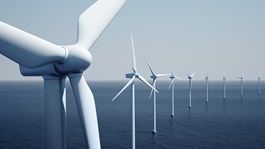The coming into force of the Waste Classification and Management Regulations, 2013 (WCM Regulations) and the National Norms and Standards for Disposal of Waste to Landfill (Disposal Norms) on 23 August 2013 heralded a new regime for waste management in South Africa.
A fundamental change brought about by the WCM Regulations is the requirement for generators of waste to ensure that waste is classified in accordance with South African National Standard 10234: Globally Harmonized System of classification and labelling of chemicals (GHS). Where waste is intended for disposal to landfill it must also be assessed in terms of prescribed standards to identify the appropriate landfill type to be used for disposal.
The WCM Regulations and Disposal Norms have formalised the regulatory process relating to the classification and disposal of waste under the mandate of the Department of Environmental Affairs (DEA) and aligned it with the general objectives of the National Environmental Management: Waste Act, 2008, particularly to minimise the volume of waste entering landfills.
Due to the significance of the change, a phased transition was implemented. An 18 month transitional period was prescribed for previously generated wastes that had not been classified by the erstwhile Department of Water and Forestry (DWAF) or the DEA as at 23 August 2013. A three-year transitional period was prescribed within which reliance could be placed on previous classifications of waste. Several related transitional arrangements were implemented that delayed the full force of WCM Regulations relating to previously classified wastes.
With the transitional period set to end on 23 August 2016, generators, transporters, and managers of waste must re-acquaint themselves with the requirements of the WCM Regulations to ensure that the move to the new regulatory regime is a smooth one.
Most significantly, generators of waste must ensure that waste previously classified under the old DWAF Minimum Requirements document is re-classified and, if intended for disposal to landfill, re-assessed in terms of the requirements of the WCM Regulations and SANS 10234. As from 23 August 2016, reliance on a previous classification will not be allowed.
The impending expiration of the transitional period means that transporters and managers of waste will be prohibited from accepting waste that has not been classified under the WCM Regulations (unless that waste is listed on annexure 1 to the WCM Regulations, which includes waste such as domestic waste, business waste, asbestos waste, and PCB waste). To facilitate this, and to fulfil the requirements of the WCM Regulations, safety data sheets for classified wastes must be prepared in accordance with SANS 10234.
Under the Disposal Norms various categories of waste are prohibited from landfill disposal. Transitional periods were prescribed for each category. The transitional period for hazardous waste electric and electronic equipment (WEEE) - lamps will end as on 23 August 2016. From this date no WEEE lamps such as fluorescent tubes and CFLs may be disposed of to landfill.
Failure to comply with the WCM Regulations is a criminal offence with penalties of fines of up to R10 million and imprisonment being prescribed.
To prevent disruption of waste management it is recommended that an assessment be undertaken to ensure that compliance with the WCM Regulations and Disposal Norms will be achieved on 23 August 2016. As the process of classification and assessment can be lengthy this should not be delayed.


